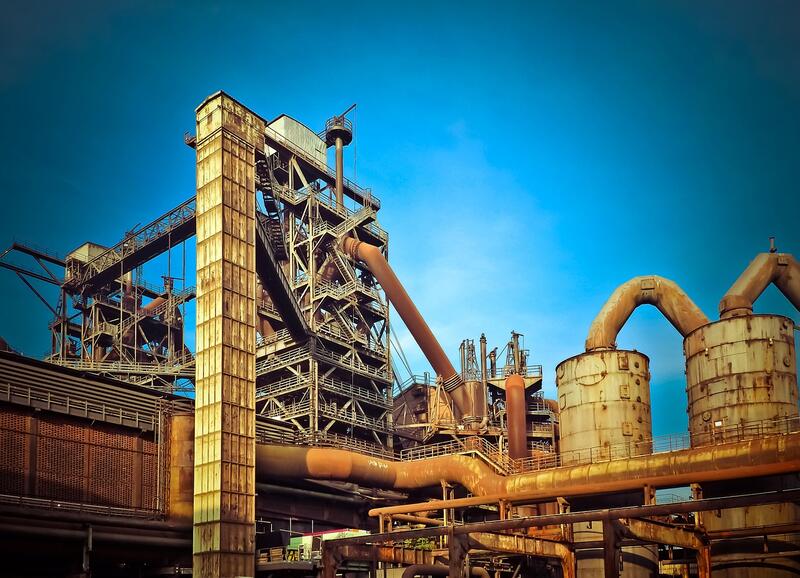Nurturing Sustainability: Approaches to Decarbonize Casting of steel
This article explores sustainable approaches to reduce carbon emissions in steel casting, including technologies and practices to promote decarbonization.

The casting of steel is a critical process in the manufacturing industry. It involves the conversion of raw materials into steel products that are used in various applications, including construction, transportation, and energy production. However, the casting of steel is also a significant source of carbon emissions, which contribute to climate change. Decarbonisation in the casting of steel sector is, therefore, an essential process that aims to reduce the carbon footprint of this industry. This article explores the concept of decarbonisation in the casting of steel sector, its importance, the main sources of carbon emissions in this sector, strategies for reducing carbon emissions, challenges facing decarbonisation, and the implications of decarbonisation for the casting of steel sector.
What is Decarbonisation in the Casting of Steel Sector and Why is it Important?
Decarbonisation refers to the process of reducing carbon emissions from various sources, including the casting of steel sector. The importance of decarbonisation in this sector cannot be overstated. The steel industry is one of the largest emitters of carbon dioxide (CO2) globally, accounting for about 7% of global emissions. The casting of steel is responsible for a significant portion of these emissions. Therefore, reducing carbon emissions in this sector is critical in mitigating the effects of climate change.
The Main Sources of Carbon Emissions in the Casting of Steel Sector
The casting of steel is a complex process that involves several stages, each of which contributes to carbon emissions. The main sources of carbon emissions in this sector include:
- Energy Consumption: The casting of steel requires a significant amount of energy, which is mostly derived from fossil fuels. The combustion of these fuels releases carbon dioxide into the atmosphere, contributing to global warming.
- Raw Materials: The production of steel requires raw materials such as iron ore, coal, and limestone. The extraction and processing of these materials also contribute to carbon emissions.
- Transportation: The transportation of raw materials and finished steel products also contributes to carbon emissions.
- Waste Management: The disposal of waste materials from the casting of steel process also contributes to carbon emissions.
How Can We Reduce Carbon Emissions in the Casting of Steel Sector?
Reducing carbon emissions in the casting of steel sector requires a multi-faceted approach that involves various strategies. Some of the strategies that can be used to reduce carbon emissions in this sector include:
- Energy Efficiency: Improving energy efficiency in the casting of steel process can significantly reduce carbon emissions. This can be achieved through the use of energy-efficient equipment, process optimization, and the use of renewable energy sources.
- Carbon Capture and Storage (CCS): CCS involves capturing carbon dioxide emissions from the casting of steel process and storing them underground. This technology can significantly reduce carbon emissions in this sector.
- Use of Alternative Raw Materials: The use of alternative raw materials such as scrap metal and recycled materials can significantly reduce carbon emissions in the casting of steel process.
- Process Optimization: Optimizing the casting of steel process can also reduce carbon emissions. This can be achieved through the use of advanced technologies, such as computer modeling and simulation.
- Circular Economy: A circular economy approach involves reducing waste and maximizing the use of resources. This approach can significantly reduce carbon emissions in the casting of steel process.
What are the Challenges Facing Decarbonisation in the Casting of Steel Sector?
Decarbonisation in the casting of steel sector faces several challenges, including:
- Cost: Implementing decarbonisation strategies can be expensive, and this may deter some companies from adopting them.
- Technology: Some decarbonisation technologies, such as CCS, are still in the early stages of development and may not be commercially viable.
- Infrastructure: The implementation of decarbonisation strategies may require significant changes to infrastructure, which can be challenging.
- Policy: The lack of supportive policies and regulations can hinder the implementation of decarbonisation strategies in the casting of steel sector.
What are the Implications of Decarbonisation for the Casting of Steel Sector?
Decarbonisation has several implications for the casting of steel sector, including:
- Increased Efficiency: Decarbonisation strategies can improve the efficiency of the casting of steel process, leading to cost savings and increased competitiveness.
- Reduced Carbon Footprint: Decarbonisation can significantly reduce the carbon footprint of the casting of steel sector, contributing to global efforts to mitigate climate change.
- New Opportunities: Decarbonisation can create new opportunities for innovation and investment in the casting of steel sector.
- Regulatory Compliance: Decarbonisation can help companies comply with increasingly stringent environmental regulations.
Conclusion
Decarbonisation in the casting of steel sector is critical in mitigating the effects of climate change. The main sources of carbon emissions in this sector include energy consumption, raw materials, transportation, and waste management. Strategies for reducing carbon emissions in this sector include energy efficiency, carbon capture and storage, use of alternative raw materials, process optimization, and circular economy. Decarbonisation in the casting of steel sector faces several challenges, including cost, technology, infrastructure, and policy. However, decarbonisation has several implications for the casting of steel sector, including increased efficiency, reduced carbon footprint, new opportunities, and regulatory compliance.